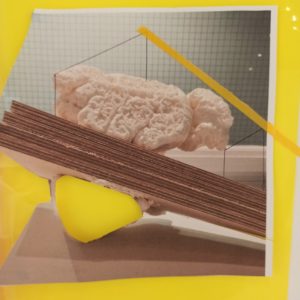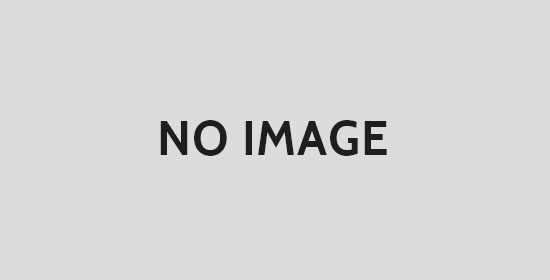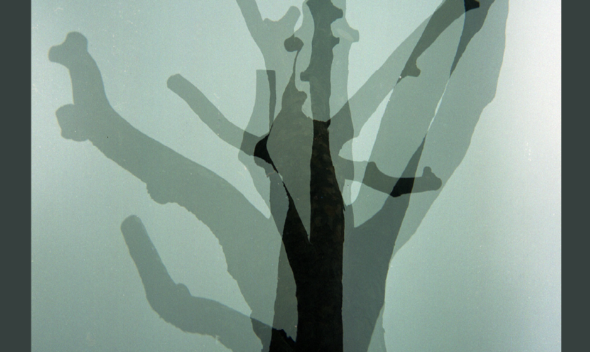I have been thinking about turning the way I view my own work from previous projects on its head – instead of intuitively looking at composition, progression I am taking a step back from what I feel is the final outcome, changing my perspective on my primary collages and sketches and planning to weave them into a projection, or into the filmed documentation showing the progression and transition of an idea. David has also given very solid advice to not go with what you feel or what your normal stages of work would be, but to refresh my approach and try something that is out of my creative box, allowing me to grow as an artist.
The notion of my sketches and collages a s a projection would be quite minimal as I often feel like I have shown my methods and documentation with but separate to the final outcome, stopping once the physical object is completed. It would be interesting to take the sculptural interpretation of the collages and continue to make the physical work, but for the final outcome to be a visual experience rather that a physical sculpture, and this would be broadening my creative intention towards my practice.
s a projection would be quite minimal as I often feel like I have shown my methods and documentation with but separate to the final outcome, stopping once the physical object is completed. It would be interesting to take the sculptural interpretation of the collages and continue to make the physical work, but for the final outcome to be a visual experience rather that a physical sculpture, and this would be broadening my creative intention towards my practice.
Reading peter Eisenman’s ‘Diagram Diaries’ I came across these two quotes: the first is about the technical aspects of lines and dimensions and the process through which shapes become diagrams;
“Technical preconditions that would allow modern architecture to refound itself… on the twin bases of structure and space had existed for hundreds of years, the aesthetic, philosophical and intellectual sources- i.e., the unique combination of cubism liberalism, gestalt psychology and the new criticism with a renewed understanding of the mannerist organising geometries would not be consolidated as an articulate assemblage until the 1950s.”
“While the idea of a deep structure was defined by a set of logical relationships, the idea of marks of an absence in the building was intended first to move cognition from the built object to interiority and then to move the idea of interiority from one of formal essences to a diagram of potential otherness. It was argued that while all integers have a form, the aesthetic of the form, when seen in a diagram, is unimportant. Rather, the different positions in space and the inherent logic of their spatial relationship….”
Researching online I came across an article on ‘Artistic research and the poetics of knowledge’ by Kathrin Busch, talking about how Contemporary art practice is now so highly saturated with theoretical knowledge that it is becoming a research practice in and of itself, that Artists not only taken up art criticism and negotiations but they now also integrate research methods and scientific knowledge into their artistic process to such a degree that it even seems to be developing into an independent form of knowledge on its own.





Leave a comment